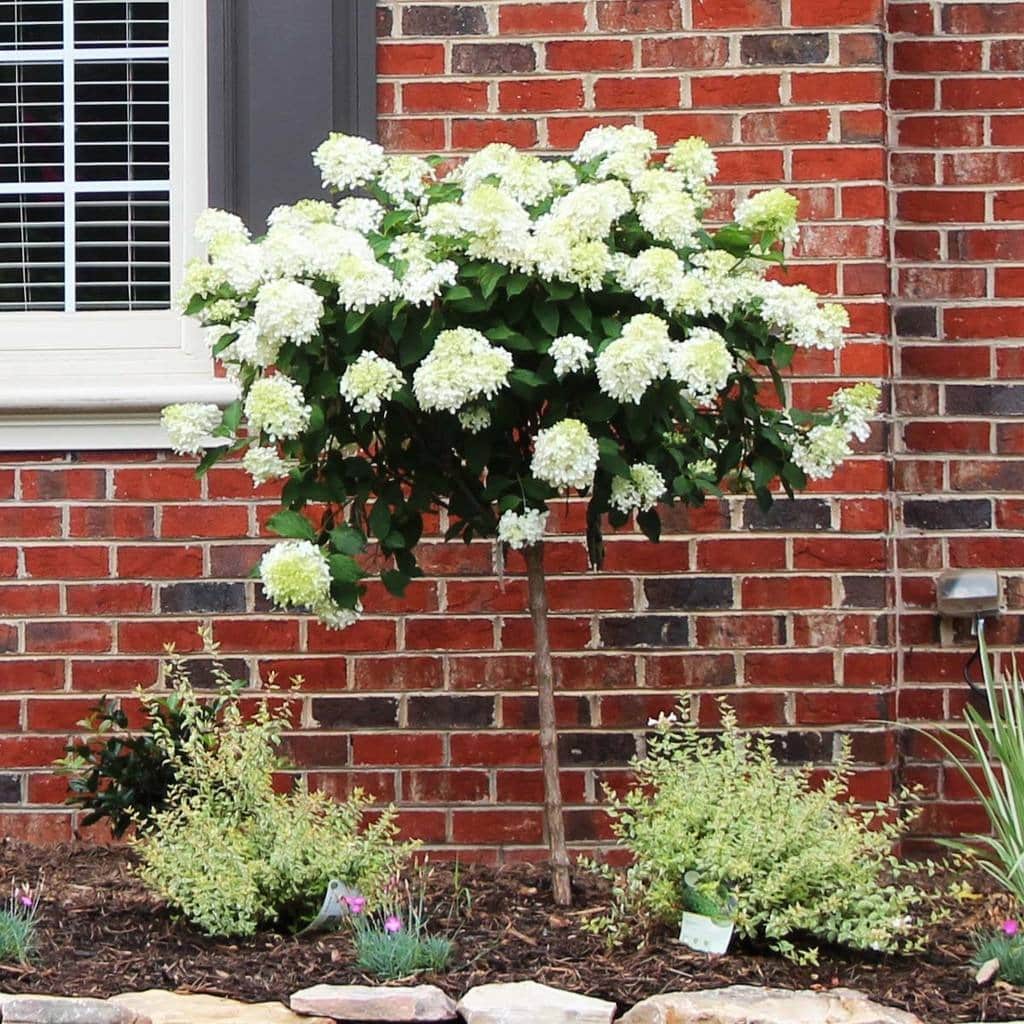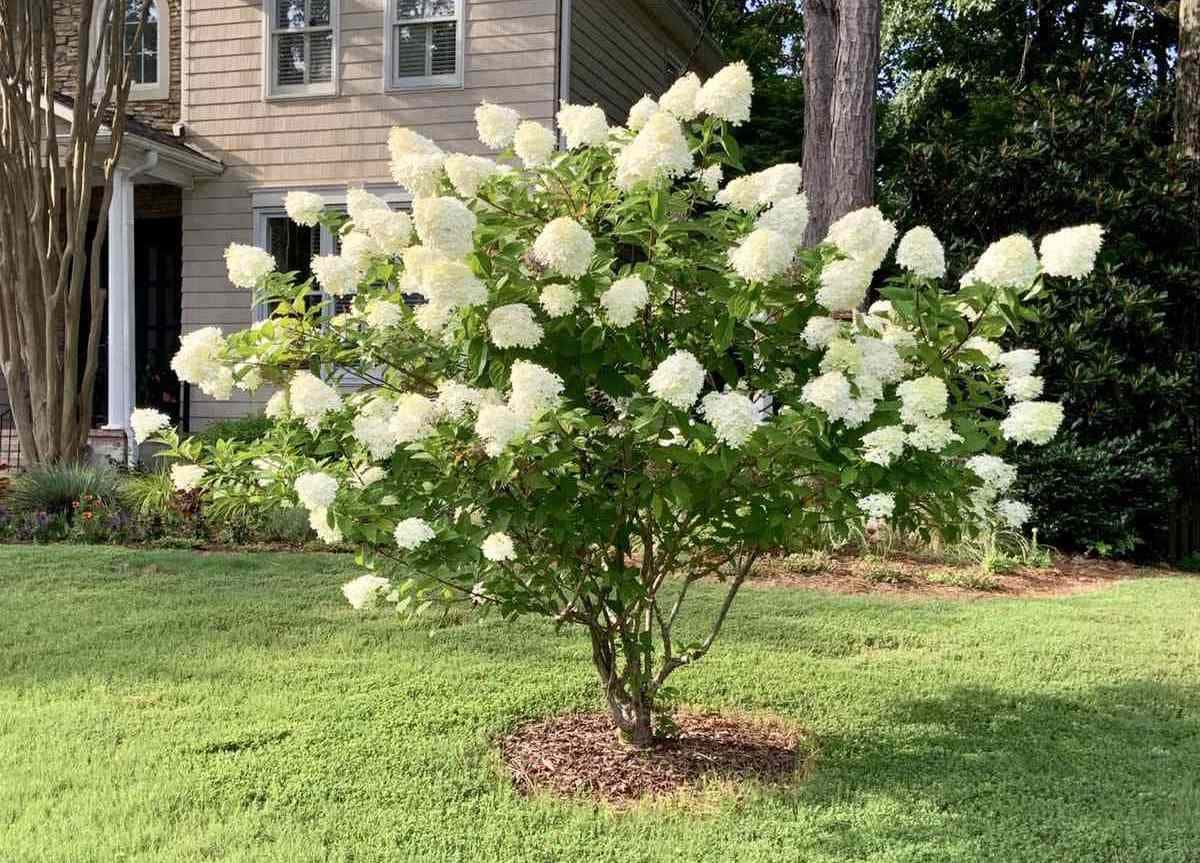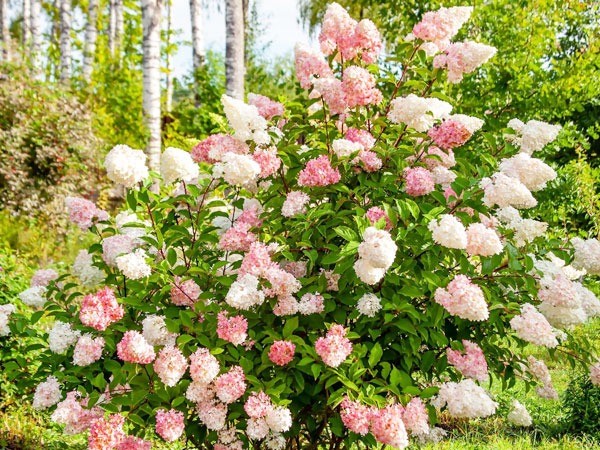Hydrangeas are absolutely fantastic garden bushes. They have a rapid growth rate, require minimal maintenance, and produce an abundance of vibrant and voluminous blooms. Naturally, they thrive as multi-stemmed shrubs and only require occasional pruning to maintain their desired shape. To grow this tree in your garden as a focal point, keep scrolling down and collect our helpful tips.
How to Grow Hydrangea Trees
Hydrangea trees, with their graceful form and bountiful blooms, can be a stunning focal point in any garden. Here’s a step-by-step guide to growing these beautiful trees:
Step 1: Selecting The Right Variety
Start by choosing a hydrangea tree variety that suits your preferences and climate. Common varieties include the Oakleaf Hydrangea, PeeGee Hydrangea, and the popular Bigleaf Hydrangea.
Step 2: Choose Planting Location
Choose a well-draining spot with partial shade, especially in the afternoon. Hydrangeas generally prefer a location with morning sun and filtered afternoon shade to protect them from harsh sunlight.
Step 3: Soil Preparation
Hydrangeas thrive in moist, fertile soil. Prepare the planting hole twice as wide as the root ball and incorporate organic matter, such as compost, into the soil to enhance its moisture retention and nutrient content.
Step 4: Planting
Gently remove the hydrangea tree from its container and place it in the center of the hole. Backfill with soil, water thoroughly, and add a layer of mulch around the base to retain moisture.

How To Take Care Of Hydrangea Trees
Maintaining the health and vibrancy of your hydrangea tree involves attention to key factors such as light, soil, water, temperature, humidity, and fertilizer.
1. Light
Hydrangea trees prefer partial shade, receiving morning sun and protection from intense afternoon sunlight. Too much direct sunlight can lead to scorched leaves and reduced flower production.
2. Soil
Plant hydrangeas in well-draining, rich soil with a slightly acidic to neutral pH. Amending the soil with organic matter helps retain moisture and provides essential nutrients.
3. Water
Tree hydrangeas prefer slightly damp soil, not wet. Avoid overwatering, as this can lead to plant illnesses and root rot. On the other hand, excessive soil drying out can lead to wilting of the foliage, which can harm or even kill the plant.
4. Temperature And Humidity
These plants thrive in moderate temperatures. While they can tolerate some heat, providing afternoon shade is crucial. Adequate humidity supports healthy growth, making regular misting beneficial in dry climates.
5. Fertilizer
Feed your hydrangea tree with a balanced, slow-release fertilizer in spring before new growth begins. Avoid excessive nitrogen, as it can promote lush foliage at the expense of flowers.

How To Get Hydrangea Trees To Bloom
1. Pruning Techniques
You should prune selectively to remove dead or weak wood and encourage new growth. For varieties that bloom on old wood, such as Bigleaf Hydrangeas, avoid pruning too late in the season.
2. Adjusting Soil pH
For Bigleaf and Oakleaf Hydrangeas, altering the soil pH can influence flower color. Acidic soil produces blue flowers, while alkaline soil yields pink. You can use aluminum sulfate for a lower pH or lime for a higher pH.
3. Mulching
Apply a layer of organic mulch around the base of the tree to regulate soil temperature and retain moisture. This helps protect the shallow root system and promotes healthy blooming.
4. Adequate Watering
Consistent moisture is essential for blooming. Ensure your hydrangea tree receives sufficient water, especially during dry periods. Mulching helps retain soil moisture and supports optimal flowering.

Other Tips For Hydrangea Tree Care
- Winter protection: In colder climates, provide winter protection by mulching around the base of the tree to insulate the roots.
- Container gardening: Hydrangea trees can thrive in containers. Use a well-draining potting mix and ensure the container has drainage holes.
- Pest and disease control: Keep an eye out for common pests like aphids and spider mites. Treat promptly with insecticidal soap if infestations occur. Proper spacing and airflow can help prevent diseases.
Growing hydrangeas as trees can be a rewarding and enjoyable experience for any gardener. Hydrangea trees are not only attractive and eye-catching, but they also provide shade and privacy for your outdoor space. By following our simple steps, you can ensure that your hydrangea trees will thrive and bloom for many years to come. Hydrangea trees are truly a wonderful addition to any garden, and they will surely impress your family and friends with their stunning flowers and foliage.
